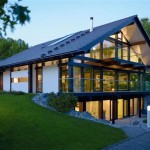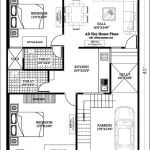Hobbit Hole Plans: Designing and Building Your Own Shire Retreat
The whimsical charm of hobbit holes, as depicted in J.R.R. Tolkien's "The Hobbit" and "The Lord of the Rings," has captivated audiences for generations. This charm translates into a growing interest in incorporating hobbit-inspired design into real-world dwellings, gardens, and play spaces. Exploring hobbit hole plans requires careful consideration of various factors, from site selection and construction materials to legal regulations and budgetary constraints.
One of the first steps in developing hobbit hole plans is determining the intended use of the structure. Will it serve as a functional living space, a guest house, a children's play area, or simply a decorative garden feature? The intended purpose dictates the necessary size, features, and level of complexity of the design. A functional living space requires considerations for plumbing, electrical wiring, insulation, and ventilation, whereas a play area may prioritize aesthetics and safety features.
Site selection plays a crucial role in the success of a hobbit hole project. Ideally, the site should incorporate a natural slope or hillside to mimic the earth-sheltered design characteristic of hobbit holes. This natural integration not only enhances the aesthetic appeal but also contributes to energy efficiency by utilizing the earth's natural insulating properties. Level ground can also accommodate hobbit hole construction, but it may require more extensive excavation and earthmoving.
Several different construction methods can be employed for hobbit hole building. One popular approach involves using concrete or cinder blocks to create a sturdy foundation and structural walls. This method offers durability and longevity but may require specialized equipment and expertise. Another approach utilizes earthbag construction, where bags filled with soil or sand are stacked and then covered with a layer of earth. This method is more cost-effective and environmentally friendly but requires careful consideration of drainage and waterproofing.
Timber framing can also play a significant role in hobbit hole construction, particularly for creating the characteristic rounded doorways and window frames. Reclaimed wood can add authenticity and contribute to a more sustainable building process. The selection of roofing materials should complement the overall aesthetic and blend seamlessly with the surrounding environment. Living roofs, planted with native vegetation, offer excellent insulation and further integrate the structure into the landscape.
Integrating essential utilities into hobbit hole plans requires careful planning and execution. If the structure is intended as a living space, plumbing and electrical systems must adhere to local building codes and regulations. Water supply lines, waste disposal systems, and electrical wiring should be strategically placed to minimize disruption to the natural surroundings and ensure the safety and functionality of the dwelling.
Ventilation is another critical consideration, particularly in earth-sheltered structures. Proper ventilation prevents moisture buildup and ensures a healthy indoor environment. Incorporating windows, skylights, and ventilation shafts can effectively facilitate airflow and regulate temperature.
Interior design and finishing touches play a crucial role in capturing the cozy and inviting atmosphere of a hobbit hole. Rounded walls, exposed beams, and natural materials such as stone and wood contribute to the rustic charm. Furnishings should be comfortable and functional, reflecting the simple and uncluttered lifestyle often associated with hobbit dwellings.
Landscaping around the hobbit hole should enhance its integration into the natural surroundings. Planting native trees, shrubs, and flowers creates a seamless transition between the structure and the landscape. Paths and walkways can be constructed using natural materials like stone or gravel, further enhancing the rustic aesthetic.
Legal considerations should not be overlooked when embarking on a hobbit hole project. Building permits and zoning regulations vary depending on location and intended use of the structure. Consulting with local authorities and obtaining the necessary permits ensures compliance with regulations and avoids potential legal issues.
Budgetary constraints play a significant role in determining the scope and feasibility of hobbit hole plans. Careful planning and material selection can help manage costs without compromising the overall design and functionality. Repurposing salvaged materials and utilizing cost-effective construction methods can contribute to a more budget-friendly project.
Thorough research and careful planning are essential for successfully bringing hobbit hole plans to life. Considering the intended use, site selection, construction methods, utilities, interior design, landscaping, legal requirements, and budgetary constraints ensures a well-executed and enjoyable project that captures the timeless charm of these whimsical dwellings.

Hobbit House Plan Plans The

Hobbit House Plans Storybook Sanctuaries

The Hobbit Floor Plan Of Bag End Natural Building Blog

Hobbit House Plan

Hobbits Hole Blueprints Hobbit House Plans

Floor Plans Www Dome Homes Com Hobbit House

14 Cutest Custom And Prefab Hobbit Houses For Tiny Living Fairy Tale Style Craft Mart

Hobbit House Plans Storybook Sanctuaries

Pin By Dan Adar On Garden Unique House Plans Cob

Spiral 2 House Plan








